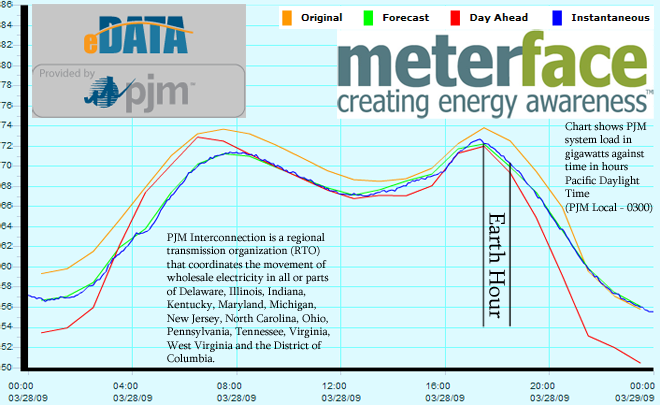Being one who prefers hard facts over conjecture any day of the week, I decided to check out the impact of yesterday's Earth Hour on actual aggregate electricity demand at the wholesale level. PJM Interconnection, the grid operator for most of the mid-Atlantic U.S., provides guest access to wholesale data for their operating area. This data should be representative of the U.S. as a whole.
I took a screenshot of the PJM load graph, shown below.
My initial reaction is that overall demand during Earth Hour trended just like it would on any other Saturday evening; it dropped off gradually as households wound down and went to sleep. Consumption during Earth Hour actually tracked above PJM's day-ahead and hourly forecasts.
It would be nice to see the data from last Saturday for comparison purposes. I'm still looking for that.
As a publicity and awareness event, Earth Hour was in many ways a success. Props to the organizers for that. But on the question of whether Americans will actually reduce energy demand when asked, Earth Hour demonstrated that it takes more than good intentions to measurably alter our behavior.

I took a screenshot of the PJM load graph, shown below.
My initial reaction is that overall demand during Earth Hour trended just like it would on any other Saturday evening; it dropped off gradually as households wound down and went to sleep. Consumption during Earth Hour actually tracked above PJM's day-ahead and hourly forecasts.
It would be nice to see the data from last Saturday for comparison purposes. I'm still looking for that.
As a publicity and awareness event, Earth Hour was in many ways a success. Props to the organizers for that. But on the question of whether Americans will actually reduce energy demand when asked, Earth Hour demonstrated that it takes more than good intentions to measurably alter our behavior.


Leave a comment